Hello gardeners....happy weekend 🌹💐🌺🌹💐🌹🌺🌹💐🌺🌺🌺🌺🌺🌺
Yesterday afternoon I harvested wild taro which grows a lot in my garden, wild taro is edible and is one of the tubers recommended for consumption by diabetics, doctors recommend consuming this taro as a substitute for white rice.
Edible wild taro plant
This wild taro plant can be eaten from the leaves, stems to tubers. Many farmers have cultivated this wild taro plant. I often make dishes from the leaves, stems and tubers of this taro.
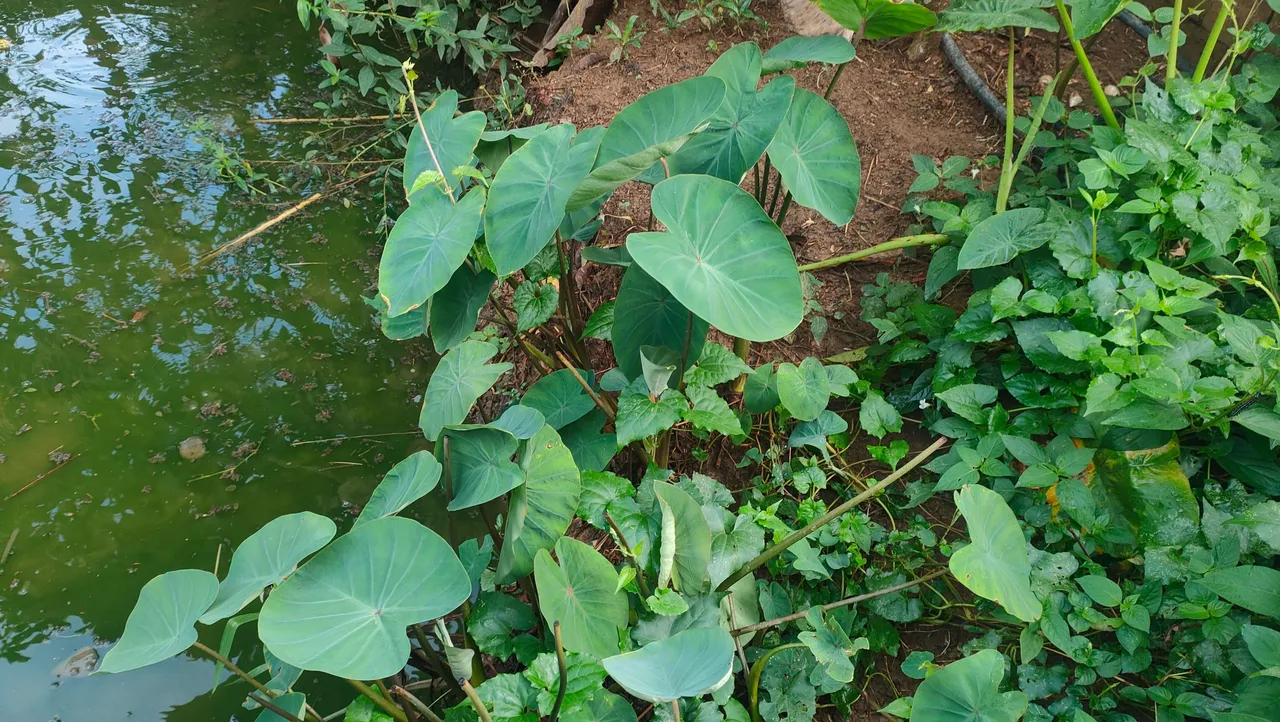
This wild taro has quite large tubers. If this taro plant is fertilized, the tubers can weigh up to 2 kilograms. The tubers sold in the market are quite expensive, reaching 15 K rupiah/kg. But I don't fertilize the taro in my garden, they grow naturally, so the weight is only around 200 grams/tuber.
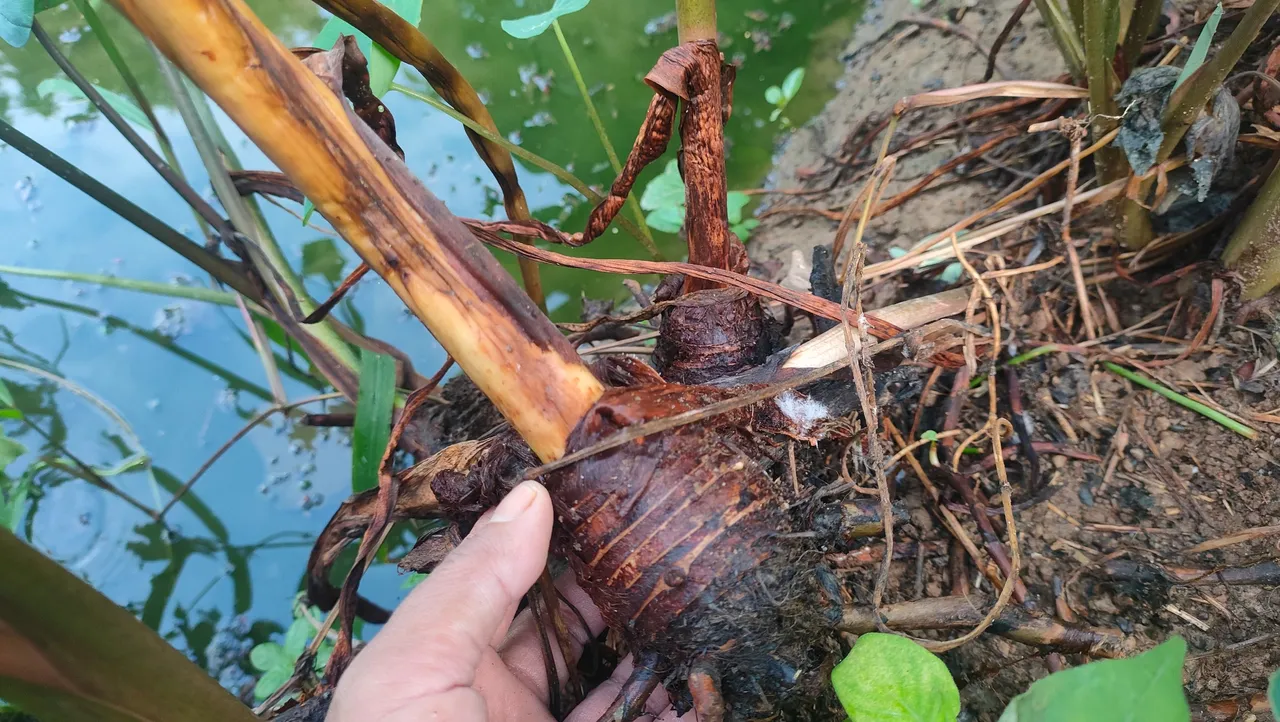
Taro tubers are produced by taro trees that are over 6 months old. If they are under 6 months old, the tubers are still small and cannot be harvested.
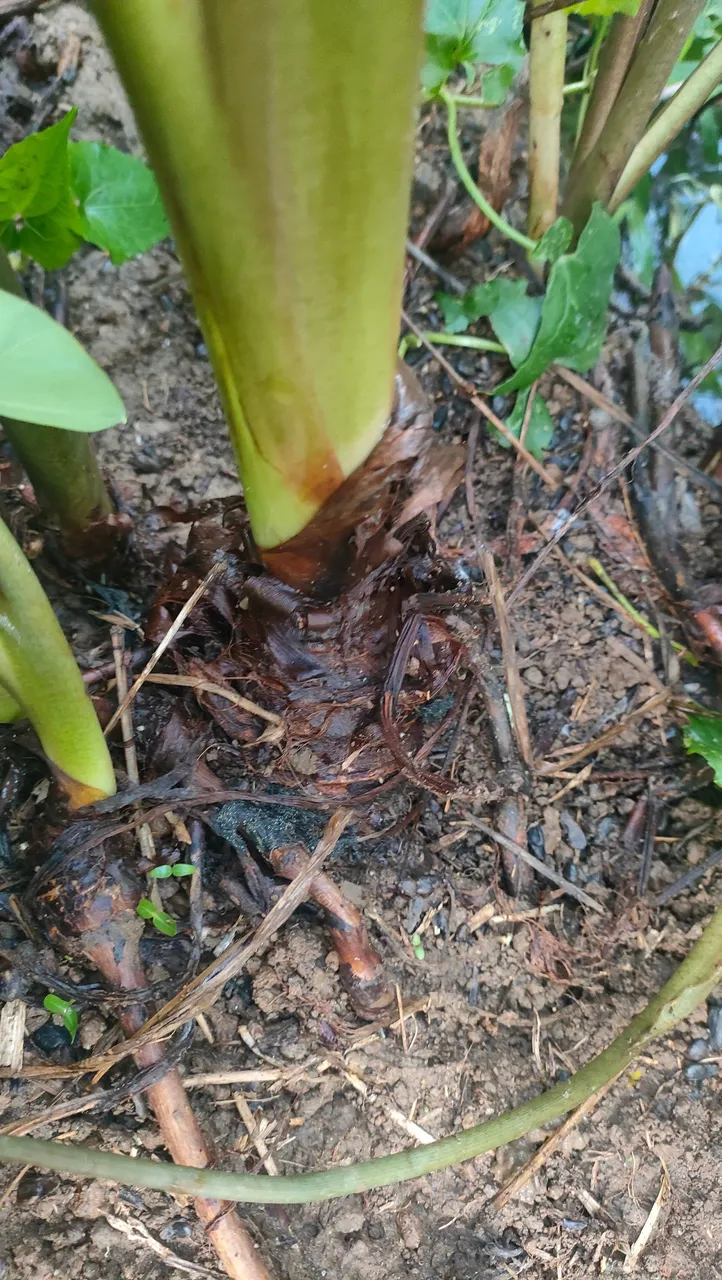
Harvesting wild taro tubers
I harvested several taro stalks, the tubers yielded quite a lot and enough for me to consume twice.
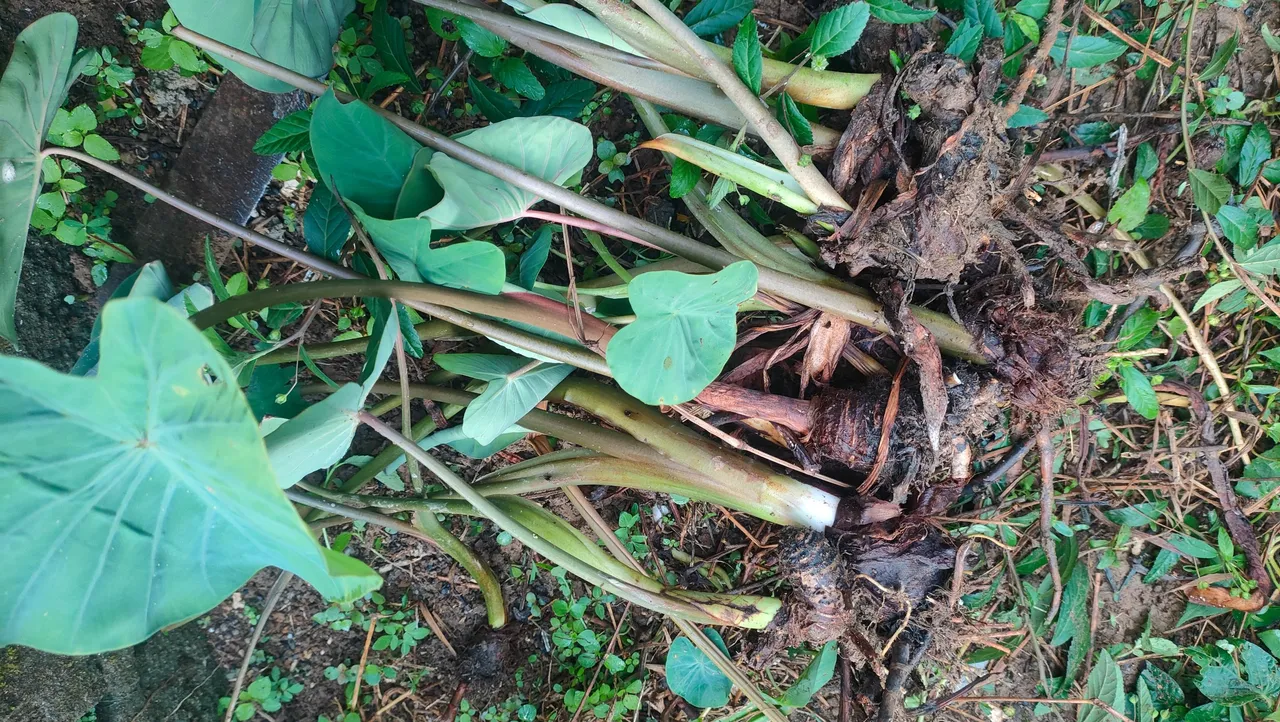
After removing several taro stems, I then separated the stems and tubers. Even though the stems and leaves are edible, I only took the tubers.
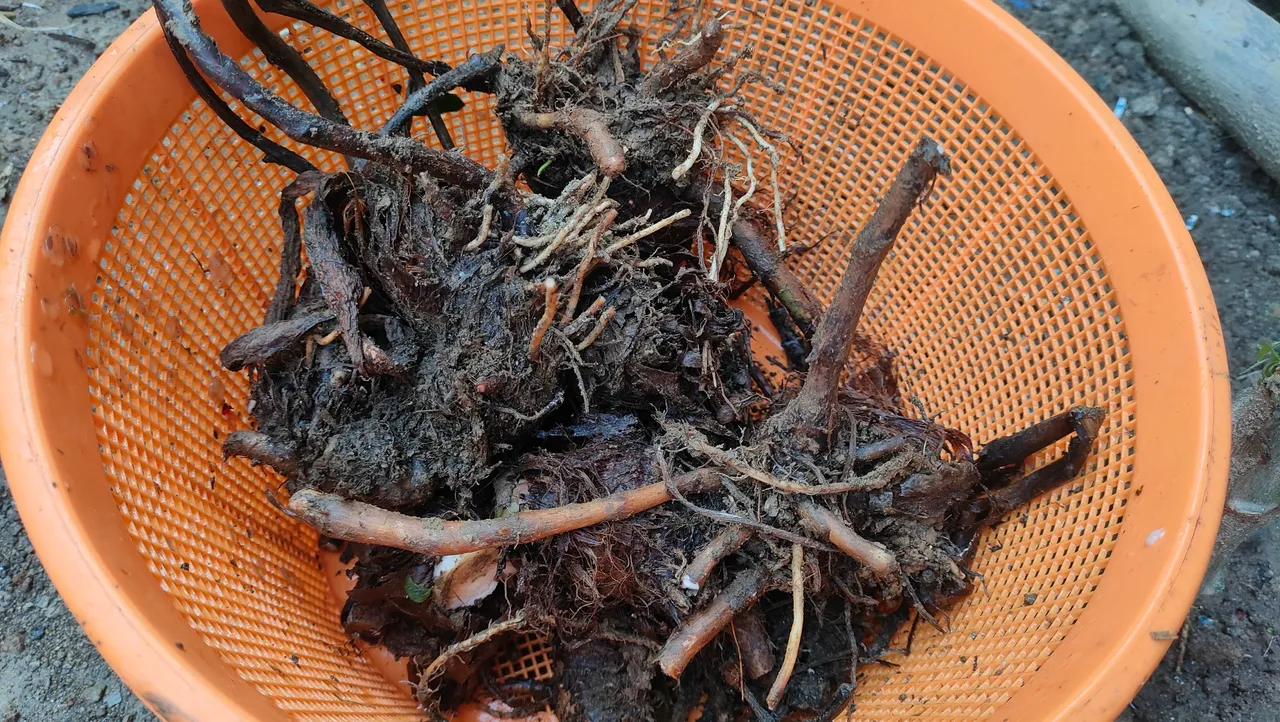
How to process taro tubers
The tubers of the taro plant have a delicious taste, but we have to process them properly because the tubers secrete sap which can make the skin feel itchy if it comes into contact with the skin. I will show you how to process these tubers so they can be eaten without causing itching. First, clean the soil that is still attached to the tubers.
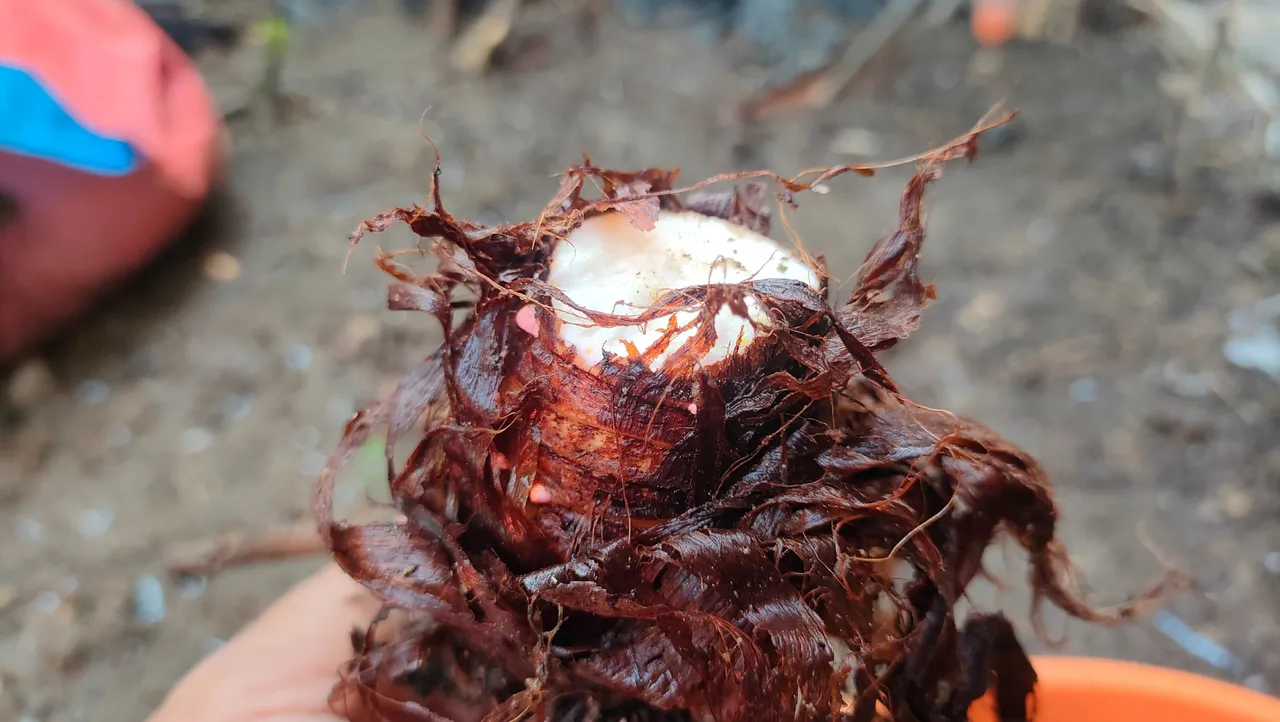
Second, remove the rotten parts, because the tubers are harvested after they are more than 6 months old, usually there are some rotten parts, we have to throw these parts away when we clean the soil from the tubers.
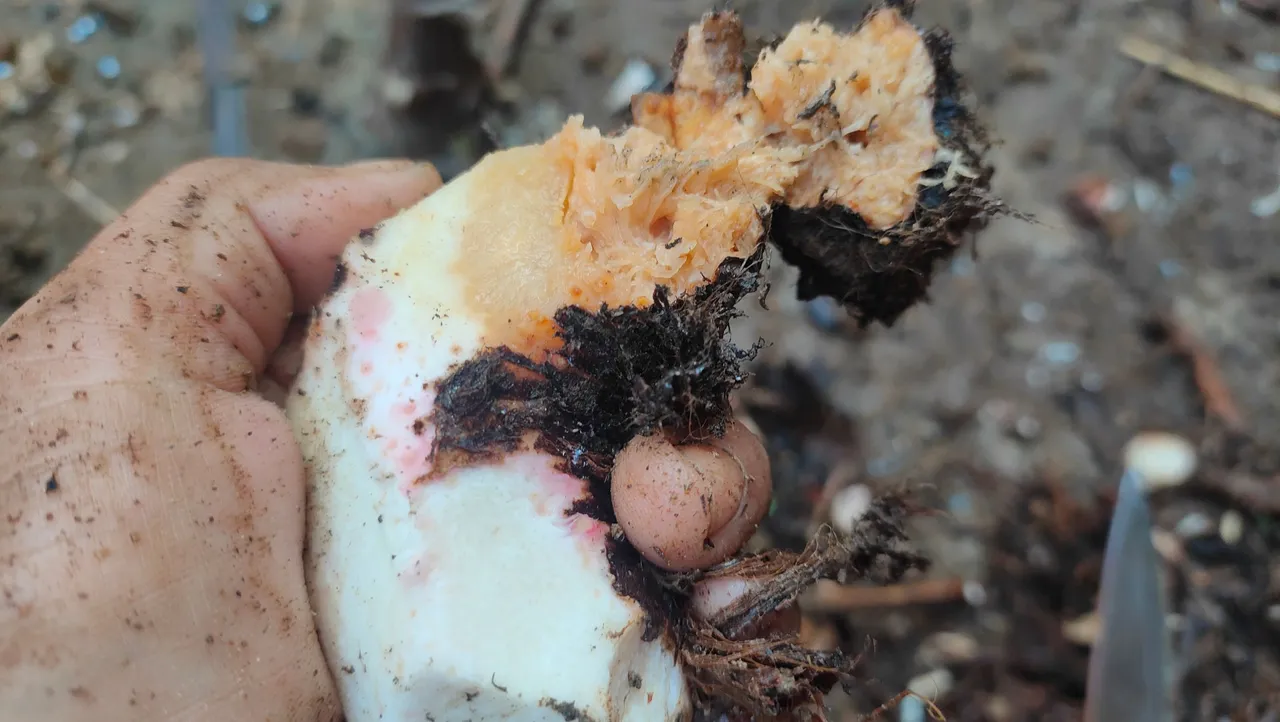
The final stage is to remove the taro skin, it's best to use plastic gloves so that the itchy sap doesn't get on the skin. I smear my hands with cooking oil when peeling the skin, so my hands don't itch.
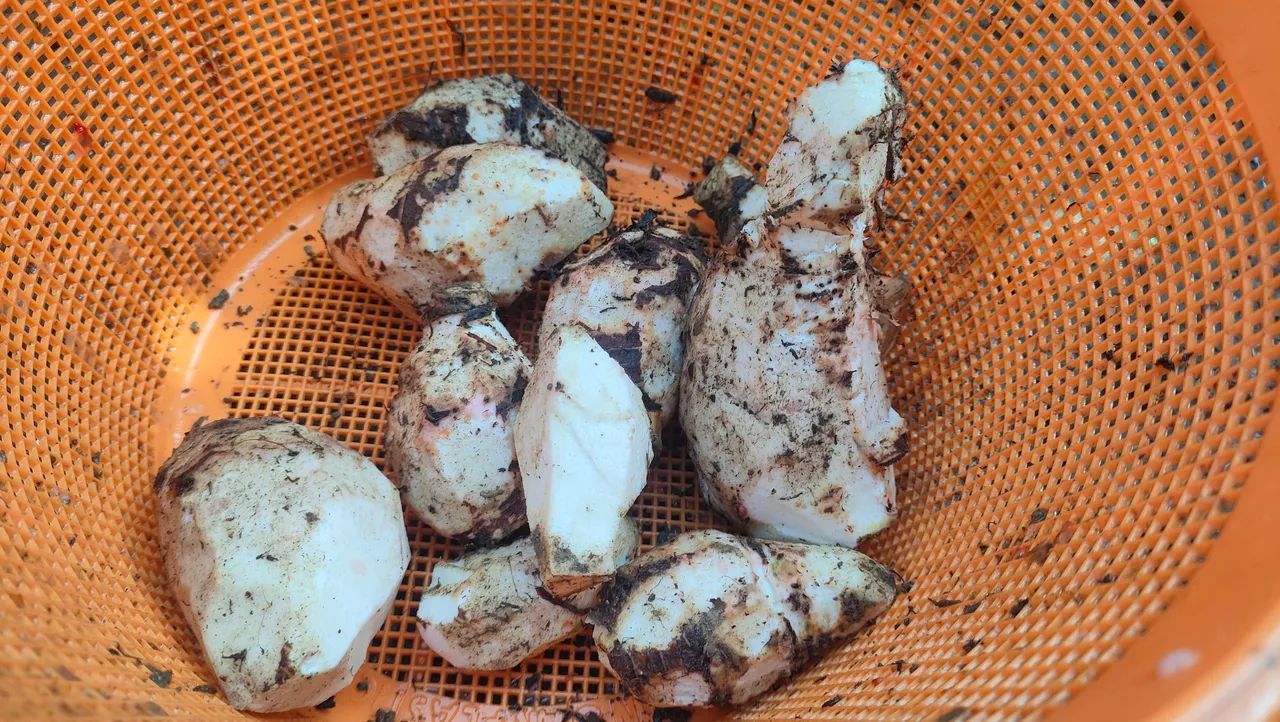
How to cook wild taro so it doesn't itch
First, cook the water until it boils.
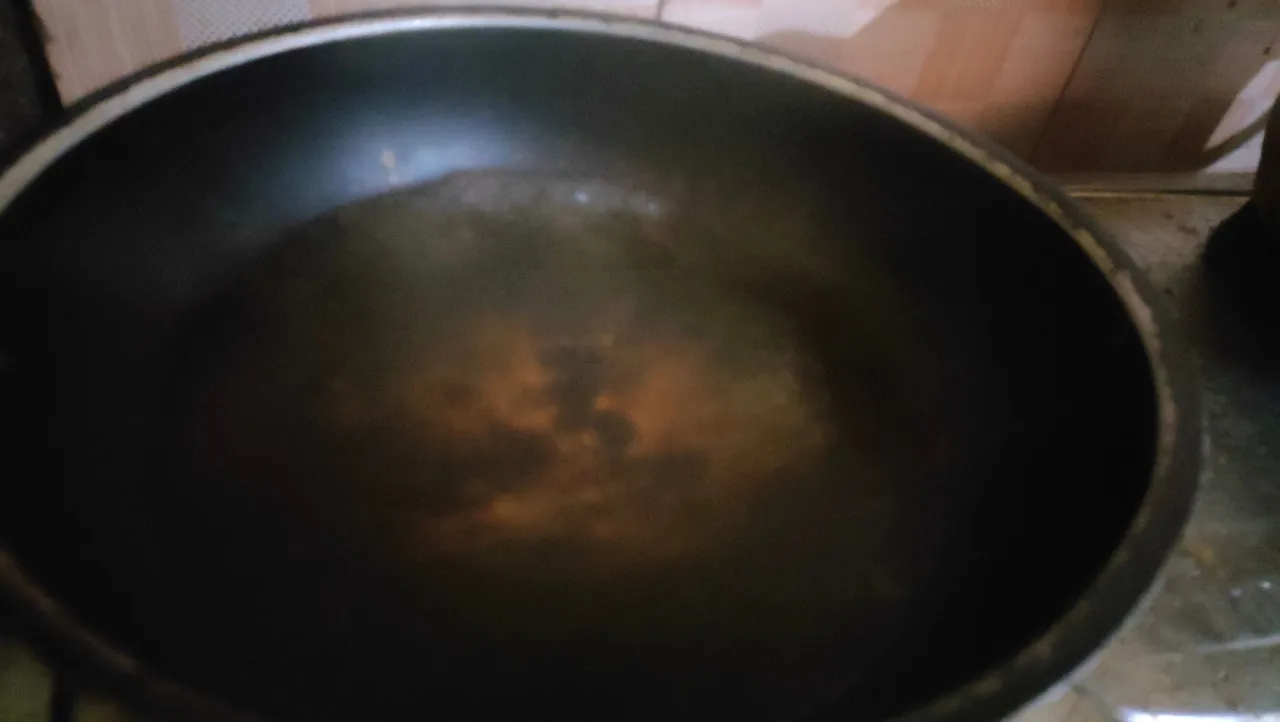
Second, while waiting for the water to boil, we can wash the taro tubers clean, use running water, be careful when washing them, because the sap causes itching.
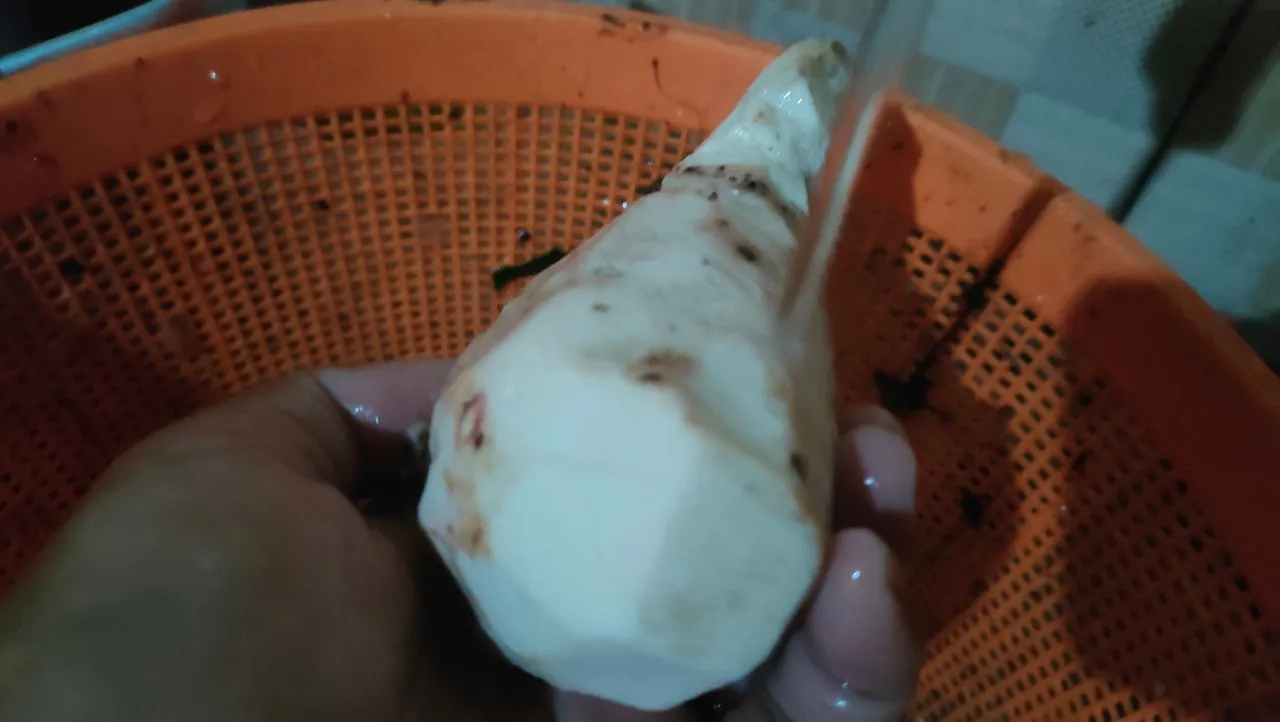
Third, after the cooking water boils, then add the taro, boil until half cooked and the boiled water turns red or brownish.
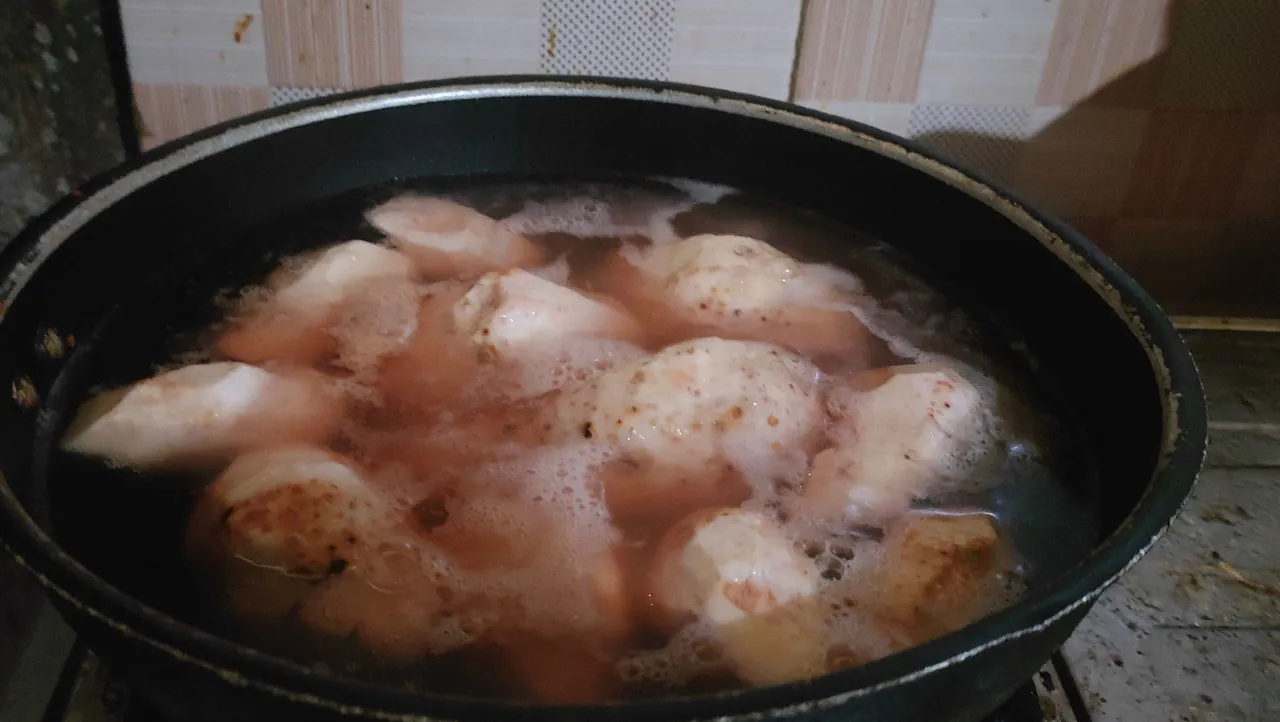
Fourth, after the boiled water turns red, then turn off the stove, wash the taro again with running water.


Fifth, provide clean water in the pan, then add the taro that we have cooked and washed again, we will boil it once again.
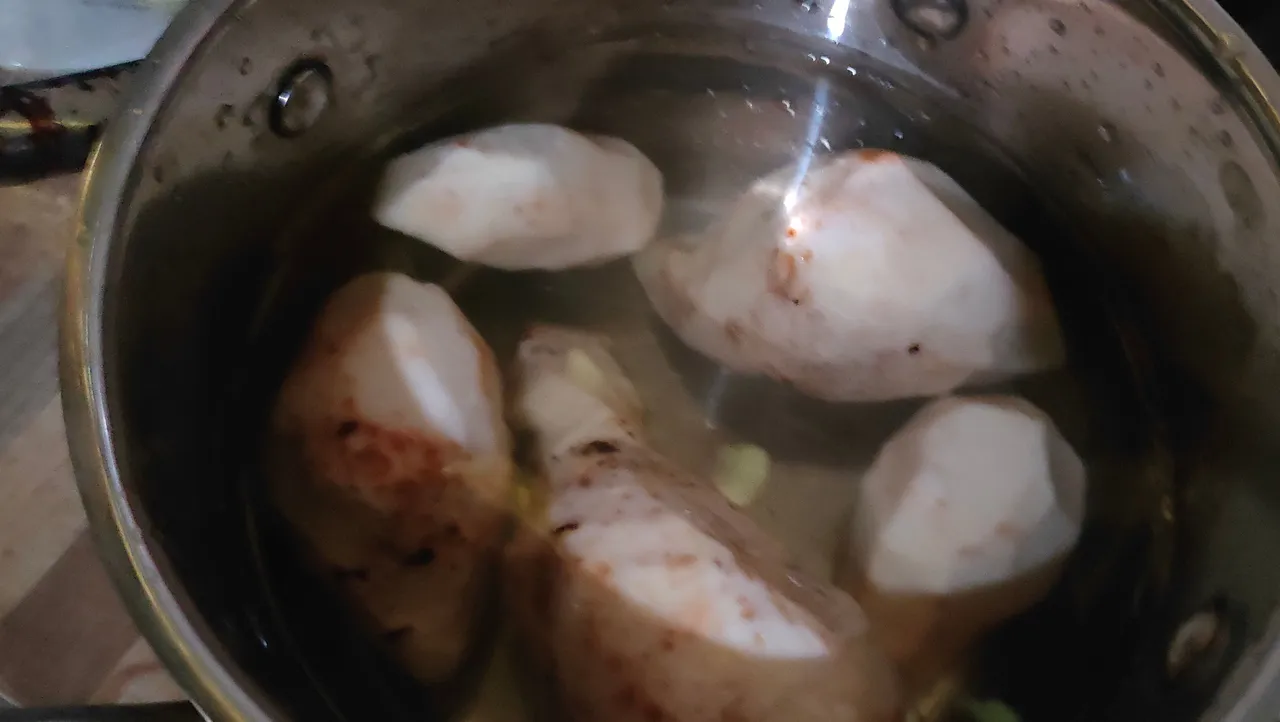
Sixth, boil the taro tubers until soft,add salt to taste, I took 20 minutes to boil them over medium heat. After cooking, immediately remove the taro tubers, drain the water.

Once soft and edible, the texture of the tuber will break like this, there are cracks in the tuber.
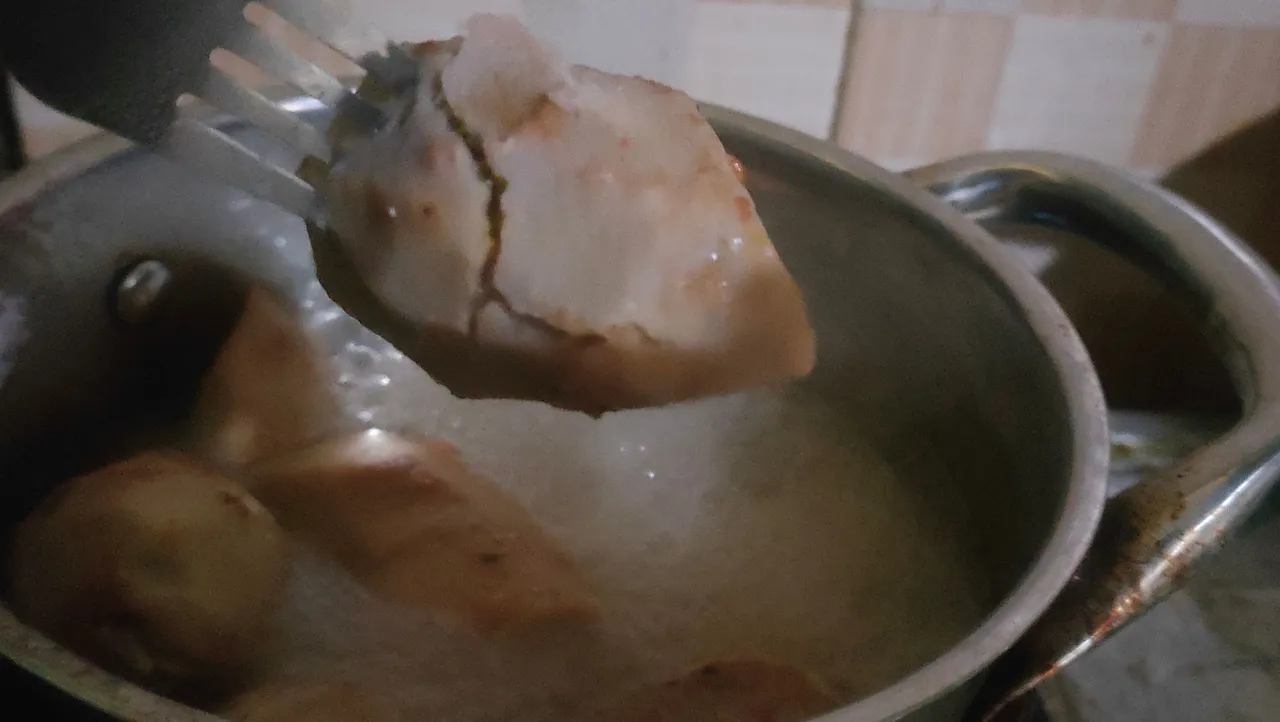
Now the taro tubers can be eaten and these taro tubers are highly recommended by doctors as a substitute for white rice, especially for diabetes sufferers.

Hopefully this method is useful for friends, thank you for reading my post.
Best Regards
@umirais
